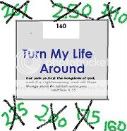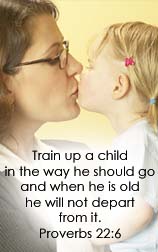I remember, when the children were younger, being quite fascinated by the thought of having the children use products from The Critical Thinking Co.™, because I believed (and still do) that learning to think critically and logically is very important. I used to peruse their catalog every once in a while, hoping we could buy at least one of the books for our homeschool. Then we had the opportunity to review not one, but three different products thanks to being on the Homeschool Review Crew. As I had thought, I really enjoyed their products. So, I was thrilled when we had the opportunity to again review a product this year. Critical Thinking Detective Book 1 by Michael Baker is part of a Critical Thinking Detective series that is available in print or eBook form.
We received the 32-page paperback book containing 12 detective cases for children to solve. They are suitable for children from 4th grade through 12th grade.
Before getting into the cases you will find an introduction section with the Table of Contents, plus an About This Book section and tips on How to Solve These Cases. The bulk of the book is devoted to the cases, each of which takes up the double page spread. The story that contains the statements and evidence is on the left page, while the worksheet for filling in information to figure out the guilty party is on the right side.
The book concludes with the Answer Key. Just a little tip, don't be carelessly flipping through this section unless you want to know the identity of all the thieves, seeing as each thief is circled in red, so it is hard to avoid.
All of these cases involve theft of some kind. Here is a list of the cases:
- The Car Thief
- The Lunch Money Thief
- The Chicken Breast Thief
- The Necklace Thief
- The Bath Robe Thief
- The Big City Bicycle Thief
- The Purse Thief
- The Plant Thief
- The Dog Food Thief
- The Tie Thief
- The Football Thief and
- The Coffee Mug Thief
The student needs to be able to read the stories carefully and study the evidence. What I appreciated is knowing that there are no advanced math concepts or tricky logic included. Though some cases are more challenging than others, the information is right there in the story, and we are reminded at the beginning of each case that all the witnesses and suspects are speaking absolute truth, so no trickery is involved. I just told my daughter to think of it this way, pretend they are hooked up to a lie detector machine. We know they are not lying, so you just have to read the information and think it through logically.
As a child reads a case, they will be introduced to what was stolen, where it was stolen from, and an approximate time when it was stolen. Sometimes there will be witness statements included in the story. These statements will include relevant and non-relevant information that the student will need to sift through. At the bottom of the page you will find pictures of the four suspects, along with their statements. Sometimes the descriptions help, other times not so much. For instance, when the witness states that the thief had wavy or curly hair and all the suspects have wavy or curly hair, we know we aren't going to worry about that detail.
Each sentence in the case is numbered as children are to use these numbers in their fact worksheet while writing down the evidence in complete sentences. Here is a look at part of a fact sheet Tabitha was filling out. I didn't want to show the full page and give away the identity of the thief.
After listing all the innocent suspects along with the evidence proving their innocence, the student is to write the name of the suspect that is the thief, along with the evidence proving it. Sometimes what makes the person guilty is the fact that all the other suspects were able to be proven innocent, even though there is no hard evidence that the person is guilty. However, we are told in the story that one of the people confessed and was arrested, so we know that one is most definitely guilty. This is actually a point that confuses Tabitha at times as she would like to find specific evidence that the person is guilty. I have to explain to her that the guilty party isn't always going to give away details that incriminate themselves; however, by proving others innocent and knowing the person confessed, we know we have a guilty thief.
How have we been using Critical Thinking Detective Book 1?
When we first received the book, I actually tried using this with all the children during our story time. When I discovered the book was reproducible within our family, I was quite excited. I photocopied the fact worksheet and read one case out loud. We then worked our way through the evidence. It was definitely a bit over the heads of the youngest children, and they weren't all that willing to write down the information. Since that first time we really haven't attempted it again.
Tabitha has mostly been working through Critical Thinking Detective Book 1 by herself. She'll work on it during her independent work time, sometimes at the table, other times in her room, or even on the couch.
There are times she has needed help figuring details out, but she has been pretty good at getting the work done. I always like to read the case myself before looking at her answers, to see if I can figure it out. And if she hasn't figured it out yet, then I can try to help her. I admit, there have been times even I have been confused. Then I realize I missed an important detail. In fact, for a while Tabitha and I were insisting the answer for one case didn't make sense. That is, until my husband pointed out a small detail that I wasn't focusing on. You could try this case out for yourself actually. They include a sample on the Critical Thinking Detective Book 1 page of The Critical Thinking Co.™ website. We actually thought we knew the identity of the thief when we first tried it out, prior to receiving the book. However, we were a bit confused when we saw the answer key and realized we were wrong.
All in all, we have enjoyed working through Critical Thinking Detective Book 1. I like that they have given Tabitha a challenge, and have made her use her critical thinking skills. I think it is great that each sentence is numbered, so they can write down the specifics in a logical way. Seeing as there are cases that stumped me, I can definitely see how this book is appropriate for a wide age range.
Tabitha stated she, "likes how you are the detective and you get to solve cases." Which I figured she would appreciate because she enjoys reading mystery books.
This is definitely a product I highly recommend.
This is definitely a product I highly recommend.
You can find the The Critical Thinking Co.™ on Facebook, Twitter, Pinterest, and Google+
Are you eager to try out some critical thinking with your children? You could sign up to receive free weekly general Critical Thinking Puzzles via email. This is a $75 value, and you can choose the grade level(s) your children would need. They offer puzzles in the following grade ranges: Pre-K, K-2, 3-5, and 6-8.
How about even more good news! Critical Thinking Co. is offering my readers Free Shipping + 15% off ANY size order. Just use the Coupon Code TOSCREW18. This code is good for the remainder of the year, expiring on December 31, 2018
Are you eager to try out some critical thinking with your children? You could sign up to receive free weekly general Critical Thinking Puzzles via email. This is a $75 value, and you can choose the grade level(s) your children would need. They offer puzzles in the following grade ranges: Pre-K, K-2, 3-5, and 6-8.
How about even more good news! Critical Thinking Co. is offering my readers Free Shipping + 15% off ANY size order. Just use the Coupon Code TOSCREW18. This code is good for the remainder of the year, expiring on December 31, 2018
My fellow Crew Mates and I were actually able to choose between several different books for this review. When you click on the banner below, you will find reviews for the following products in addition to the Critical Thinking Detective Book 1 that we reviewed:































![[PREMIO2009.png]](https://blogger.googleusercontent.com/img/b/R29vZ2xl/AVvXsEjXD_Gx-wZ9EM5hXKrEYLksEBkYfRQtmb8VDVTDG_yyLggQoFIstZsh4zszdG20KqErZicRzEhiNYLty7j3IMXJYsABqkXjr8pp-ncj71xCbpxlXGbGpZq2fTuDQqq1RMKV4DPcDBnBViA/s1600/PREMIO2009.png)




No comments:
Post a Comment
Thank you for visiting my blog today. I love to read your comments, so please leave me one if you have the time.
Blessings